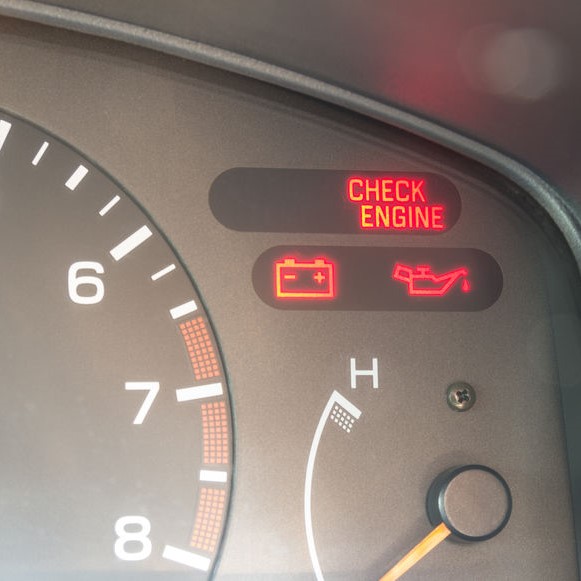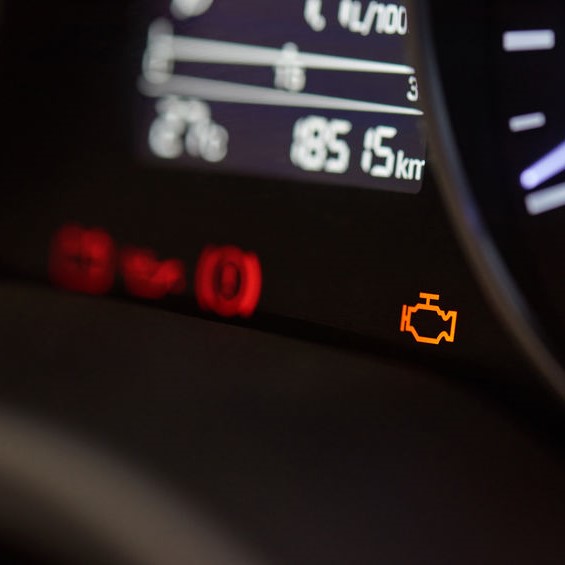
So, how do you diagnose car problems today with the check engine light system?
Today’s cars have warning lights on the dashboard that are activated by a computer. Those warning lights are just that, a warning something is amiss with the car. Before warning lights, cars had gauges, much like the gas gauge, for things like the oil level and temperature. When the gauge read between a certain range, you knew you needed to do something, but what do the warning lights mean, especially the check engine light?
When cars were equipped with gauges, owners and/or mechanics would know precisely what to check to determine what to do. With a check engine light though, it can mean different things.
A professional mechanic at an auto diagnostics center will have an engine diagnostics tool to perform a diagnostic scan. This will help them pinpoint the issue causing the check engine light to come on.
What is a diagnostic scan?
The basics of a diagnostic scan for cars is to read the codes a car’s computer is “throwing”, in other words, causing the check engine light to come on, sometimes staying on. It will then automatically record any problem detected and enables the mechanic to diagnosis what is wrong and what needs to be done to fix the problem.
There are different brands of diagnostic machines, and Bosch engine diagnostic equipment is at the top of the line. A diagnostic test reads what the computer system is getting from the computer’s microchips, processor, and sensors, causing the check engine light to come on.
It then logs the issues or problems that are present. A diagnostic test reveals any existing flaws, including problems with the exhaust, oil system, transmission, and other components and systems within the engine. While the check engine light is telling you that something is wrong, a diagnostic test will provide an accurate assessment and reading quickly.
After the diagnostic scan, the technician may need to drive the car to test it on the road and they will complete their inspection with visual check of all components. The technician will sometimes perform a comprehensive analysis on the battery and charging system if the computer diagnostic testing didn’t indicate what is making the check engine light turn on.
How long does a diagnostic take on a car?
There are different factors that can affect the time it takes for a mechanic to run a diagnostic test on your car. An hour to ninety minutes is standard, but if the issues are more complicated, some of engine components may need to be removed, taking up to three hours for the testing to be completed.
How much does it cost for a diagnostic test on a car?
Rates can vary from area to area, and it depends on the make of the car too. A diagnostic testing is usually charged by the hour, not the service, and can start around $100 per hour and go upward to $200 per hour or more. You’re paying for the technician’s experience and knowledge of connecting the diagnostic equipment and ability to read the results that determine why the check engine light came on. The car’s computer signals that check engine light to illuminate for problems with any of the following areas:
- Brakes
- Cooling system
- Engine
- Exhaust system

Is it safe to drive with engine light on?
It depends, but what isn’t safe is to panic when the check engine light comes on. Remaining calm and do a quick assessment by asking yourself the following questions:
- Did you recently bet gas? The check engine light could be nothing more than the gas cap is loose.
- Was there a jolt or vibration when the check engine light came on? If you’re having trouble controlling the car after the check engine light came on, pull over and call a tow truck.
- Was there any strange noises or sounds when the check engine light came on? If yes, again, pull over and call a tow truck.
- Is the check engine light flashing? A flashing light is typically something serious and you should not drive any further.
For engine noise diagnostics, and the check engine light may or may not come on, but instead, it takes the human hearing system. Some common engine noises and sounds that are telling you to take your car to a mechanic are:
- Piston Ring Noises: A clicking noise when you accelerate that can be caused by problems with the rings being broken, or the cylinder walls are worn. To diagnose this problem, each spark plug needs to be removed and engine oil added to each one, then start the engine, let it run for several revolutions. If the noise quietens, then you need the rings replaced in the engine. The check engine light may come on when this is happening because the engine isn’t getting the oil it needs.
- Piston Slapping Sound: This muffled but continuous hollow sound is typically a problem with the wall clearance for the piston, worn cylinders, or the car may be low of oil, which usually will cause the check engine light to illuminate.
- Crankshaft Knocking Sound: This metallic, heavy, dull sound is when the engine is under load and usually indicates problem with the bearing, main, rod, or thrust. The oil will have metal shavings in it to confirm this is the problem and your car will need professional mechanic service.
With any of these sounds, or a check engine light issue, getting the service of a professional mechanic is recommended. The longer you let these things go and keep driving, the more damage you could be doing to your car’s engine. Call 630-932-4427 today for your check engine light service in Lombard and Wheaton, IL.
